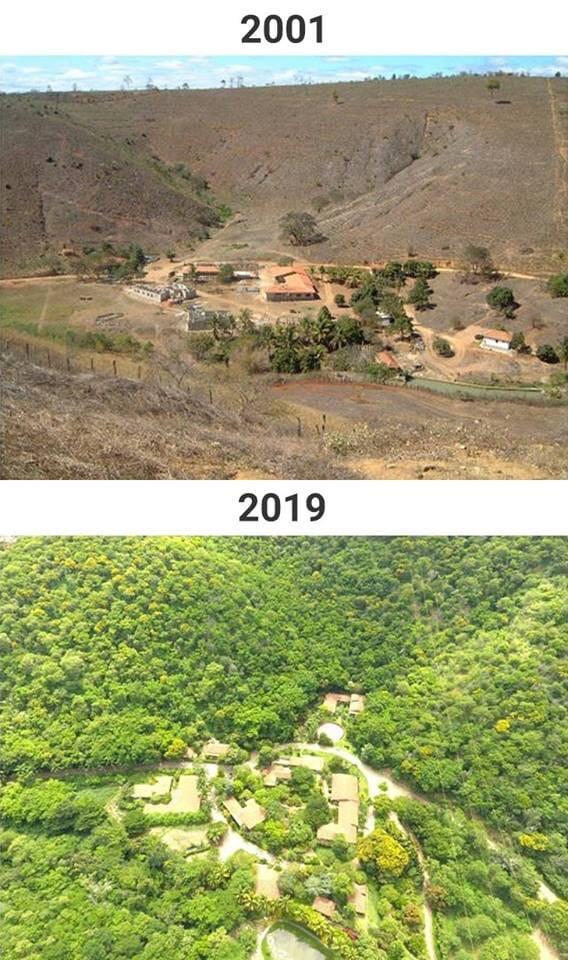Thecaffiend - Thecaffiend

More Posts from Thecaffiend and Others
Whenever I take a long car ride I end up exhausted afterwards, and I'm always like "why am I so tired? I was just sitting around doing nothing all day."
But the answer, it turns out, is I was doing something. Riding in a car jars your body in many directions and requires constant microadjustments of your muscles just to stay in place and hold your normal posture. Because you're inside the car, inside the situation, it's easy not to notice all the extra work you're doing just to maintain the status quo.
There's all sorts of work that we think of as "free" that require spending energy: concentrating, making decisions, managing anxiety, maintaining hypervigilance in an unfriendly environment, dealing with stereotype threat, processing a lot of sensory input, repairing skin cells damaged by sun exposure, trying to stay warm in a cold room.
The next time you think you're tired from "nothing", consider instead that you're probably in situation where you're doing a lot of unnoticed extra work just to stay in place.


Once the bugs get ironed out, AI Image Generation will forever change propaganda and how easy it is to make and distribute.
i have never met an unpsychotic person who knows what it actually means to “not encourage the delusion” …not a single one
if you refuse to get the vaccine the government should sneak into your room after you go to sleep and take out the little chip in your neck that makes the supermarket doors open when you go near them
it strikes me as somewhat uncomfortable that so many people focus on asian stories only after the events of the past couple of days. people dm me for the first time in months and asian creators get spotlighted (which is lovely), and yet it feels so performative. why? because so many of these ppl dming me and whatnot have never been interested in interacting diverse content or speaking out about the stories of poc—it’s like they’re doing this to solely gain brownie points. in a few months’ time, they won’t be doing all this anymore. they’ll go back to their silence, to not caring about asian creators. that’s what makes it performative. the stories of asian people shouldn’t be heard and spread only when they’ve been murdered and/or when their pain finally makes it onto news headlines.
The divine right of kings but it's a curse


x
Today I learned about a couple that decided to rebuild their deserted piece of land of 600 hectares in Aimorés, Brazil. They planted more than 2 million tree saplings. As a result, the site has 293 plant species, 172 bird species and 33 animal species, some of which were on the verge of extinction. It only took 18 years!

In the early 1990s, Brazilian photo-journalist Sebastião Ribeiro Salgado was stationed in Rwanda to cover the horrific accounts of Rwanda genocide. The on-ground experience left him traumatised. In 1994, he was returning to his home in Minas Gerais, Brazil, with a heavy heart, hoping to find solace in the lap of a lush green forest, where he had grown up.
But, instead, he found dusty, barren land for miles and miles, in place of the forest. In only a few years, his beautiful hometown underwent rampant deforestation, leaving it fallow and devoid of all the wildlife. For him, everything was destroyed. “The land was as sick as I was. Only about 0.5% of the land was covered in trees,’ he shared in an interview with The Guardian. Salgado was shattered.
Saldago’s Wife Wanted to Recreate The Forest
It was at this time that Salgado’s wife Lélia made a near-impossible proposal. She expressed her wish to replant the entire forest. Salgado supported her idea, and together the couple set out on a heroic mission. Brazil Photographer Forest
Salgado bought an abandoned cattle ranch from his parents and started building a network of enthusiastic volunteers and partners who would fund and sustain their mammoth project. In 1998, the couple founded Instituto Terra – the organisation which tirelessly worked to bring a forest back to life.

PNHR Bulcão Farm | by Weverson Rocio – 2012
Salgado sowed the first seed in December 1999. The couple hired around 24 workers in the beginning and was later joined by numerous volunteers over the years. They worked day and night – from uprooting the invasive weeds to planting new seedlings. Soon, their hard work bore fruit as tropical trees native to the region started flourishing in the area. They received a donation of over one lakh saplings which gave rise to a dense forest. The handcrafted forest comprises mostly of local arboreal and shrub varieties. Latest satellite imagery revealed how a soothing green forest cover has enveloped the area which once was a devastating arid eyesore.Since 1998, they have planted more than 2 million saplings of 293 species of trees and rejuvenated 1,502 acres of tropical forest. The biodiversity-rich zone has recently been declared as a Private Natural Heritage Reserve (PNHR).
The Impact of Salgado’s Forest
The afforestation project, which is undoubtedly one of the greatest environmental initiatives in the world, has also helped to control soil erosion and revived the natural springs in the area. Eight water springs which once dried up, flow at around 20 litres per minute at present, relieving the drought-prone region of its woes. Salgado’s forest also happens to solve the much-debated notion about climate change, proving that the trend can be reversed if tried. His forest has resulted in causing more rainfall to the area and cooler weather, bringing a drastic and desirable change in the climate.

Instituto Terra’s Fauna | by Leonardo Merçon – 2012
The most important positive aspect of the forest till now has to be the return of the lost fauna. More than 172 species of birds, 33 species of mammals, 15 species of amphibians and reptiles have been spotted in the forest interiors, something which was beyond imagination two decades ago. Many of the plant and animal species in his forest actually feature on the endangered list.
Efforts For Good
Climate change is a harsh reality. Mankind is bearing the brunt of the relentless destruction they inflicted on the planet. Yet, people like Salgado and Lélia fill us with hope, proving that patience and persistence can be our keys to heal the wounds of nature. If two people can create a 1502-acre forest in just 20 years, then imagine how much can be done if everyone comes together to protect the environment. It must be reminded that for every tree we plant, we are adding 118 kgs of oxygen to the air every year, and reducing the carbon footprint by 22 kgs.
Efforts For Good urges all the readers to actively engage in planting trees and gradually turn this into a fixed habit.
Sources: http://www.scienceinsanity.com/2019/03/brazilian-couple-created-1502-acre.html
https://www.reddit.com/r/interestingasfuck/comments/bg0ebn/a_couple_decided_to_rebuild_their_deserted_piece/
-
 sasfitnessjourney23 reblogged this · 5 months ago
sasfitnessjourney23 reblogged this · 5 months ago -
 fearlesshine reblogged this · 5 months ago
fearlesshine reblogged this · 5 months ago -
 spendyourlifealive reblogged this · 5 months ago
spendyourlifealive reblogged this · 5 months ago -
 solitaire-solidaire liked this · 5 months ago
solitaire-solidaire liked this · 5 months ago -
 bookdragonpoet55 liked this · 5 months ago
bookdragonpoet55 liked this · 5 months ago -
 nemlouis liked this · 5 months ago
nemlouis liked this · 5 months ago -
 irinaspoetry liked this · 5 months ago
irinaspoetry liked this · 5 months ago -
 rosemoondreams reblogged this · 5 months ago
rosemoondreams reblogged this · 5 months ago -
 fitgothgirl reblogged this · 5 months ago
fitgothgirl reblogged this · 5 months ago -
 get-fit-4-life reblogged this · 5 months ago
get-fit-4-life reblogged this · 5 months ago -
 squeezedfreshly liked this · 6 months ago
squeezedfreshly liked this · 6 months ago -
 glossyfitspo reblogged this · 7 months ago
glossyfitspo reblogged this · 7 months ago -
 pepperdynasty liked this · 7 months ago
pepperdynasty liked this · 7 months ago -
 ambitiousfrequency liked this · 8 months ago
ambitiousfrequency liked this · 8 months ago -
 miles-make-smiles reblogged this · 8 months ago
miles-make-smiles reblogged this · 8 months ago -
 dreemz222 liked this · 9 months ago
dreemz222 liked this · 9 months ago -
 opalxmoon liked this · 10 months ago
opalxmoon liked this · 10 months ago -
 shaft-black reblogged this · 10 months ago
shaft-black reblogged this · 10 months ago -
 maninthearena89 reblogged this · 10 months ago
maninthearena89 reblogged this · 10 months ago -
 splendorandselfcare liked this · 1 year ago
splendorandselfcare liked this · 1 year ago -
 midnightbeggar liked this · 1 year ago
midnightbeggar liked this · 1 year ago -
 azulstargirl reblogged this · 1 year ago
azulstargirl reblogged this · 1 year ago -
 tymelexx liked this · 1 year ago
tymelexx liked this · 1 year ago -
 endangeredlaviathen reblogged this · 1 year ago
endangeredlaviathen reblogged this · 1 year ago -
 groundhog1964 liked this · 1 year ago
groundhog1964 liked this · 1 year ago -
 insideout-and-backwards liked this · 1 year ago
insideout-and-backwards liked this · 1 year ago -
 warrior-monk reblogged this · 1 year ago
warrior-monk reblogged this · 1 year ago -
 heyagnes reblogged this · 1 year ago
heyagnes reblogged this · 1 year ago -
 brambleandbrush reblogged this · 1 year ago
brambleandbrush reblogged this · 1 year ago -
 autumn-lifts2 reblogged this · 1 year ago
autumn-lifts2 reblogged this · 1 year ago -
 fitnessjourney96 reblogged this · 1 year ago
fitnessjourney96 reblogged this · 1 year ago -
 hmhello liked this · 1 year ago
hmhello liked this · 1 year ago -
 fitkemosabedriv reblogged this · 1 year ago
fitkemosabedriv reblogged this · 1 year ago -
 kapiesto liked this · 1 year ago
kapiesto liked this · 1 year ago -
 youaremadeofstars reblogged this · 1 year ago
youaremadeofstars reblogged this · 1 year ago -
 stardust-bridges reblogged this · 1 year ago
stardust-bridges reblogged this · 1 year ago -
 crushingwatermelonsliftingdogs reblogged this · 1 year ago
crushingwatermelonsliftingdogs reblogged this · 1 year ago -
 fitscientist reblogged this · 1 year ago
fitscientist reblogged this · 1 year ago -
 saadiqa24 liked this · 1 year ago
saadiqa24 liked this · 1 year ago -
 benimadimsanat liked this · 1 year ago
benimadimsanat liked this · 1 year ago -
 random-thoughts32 liked this · 1 year ago
random-thoughts32 liked this · 1 year ago